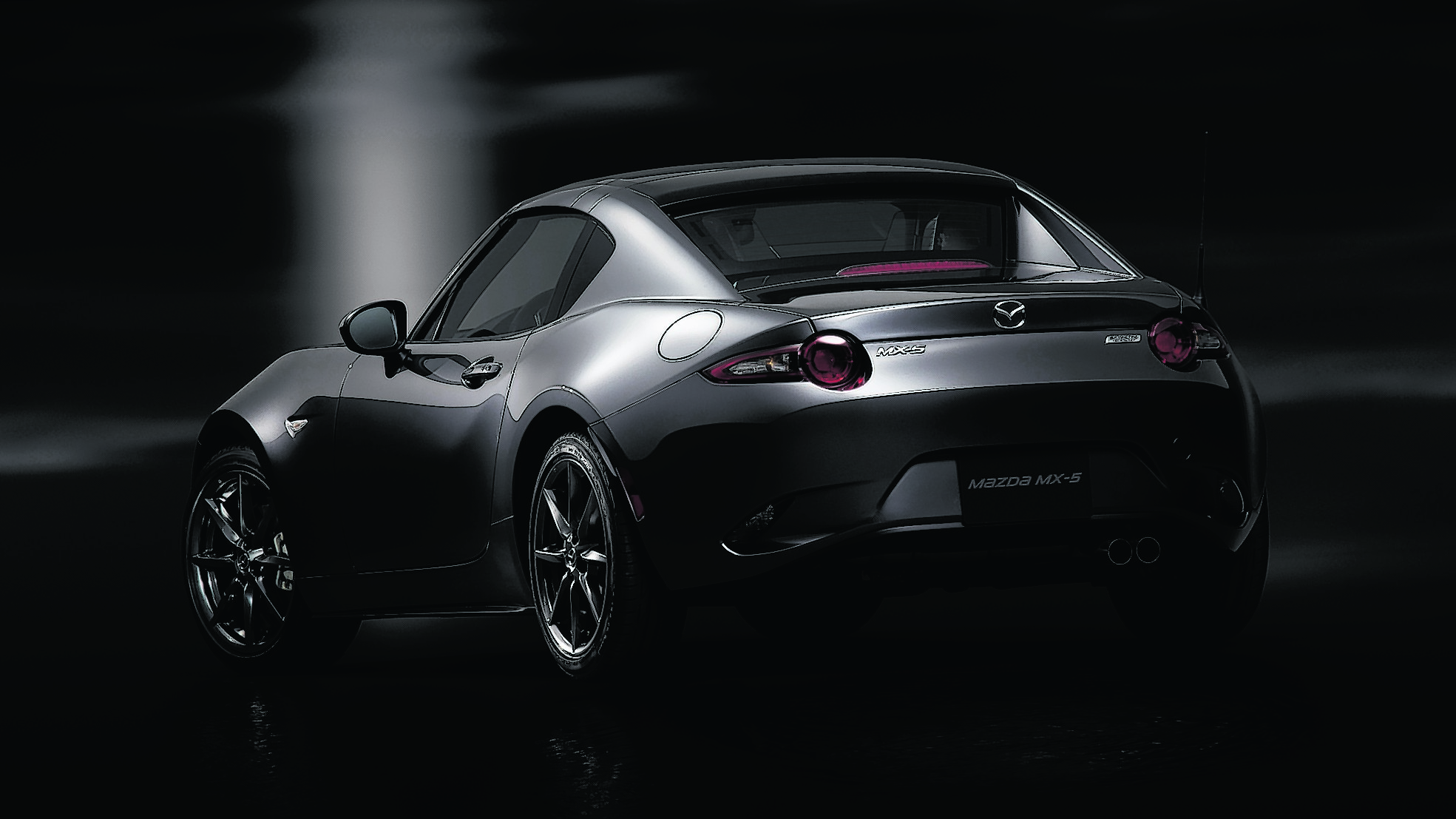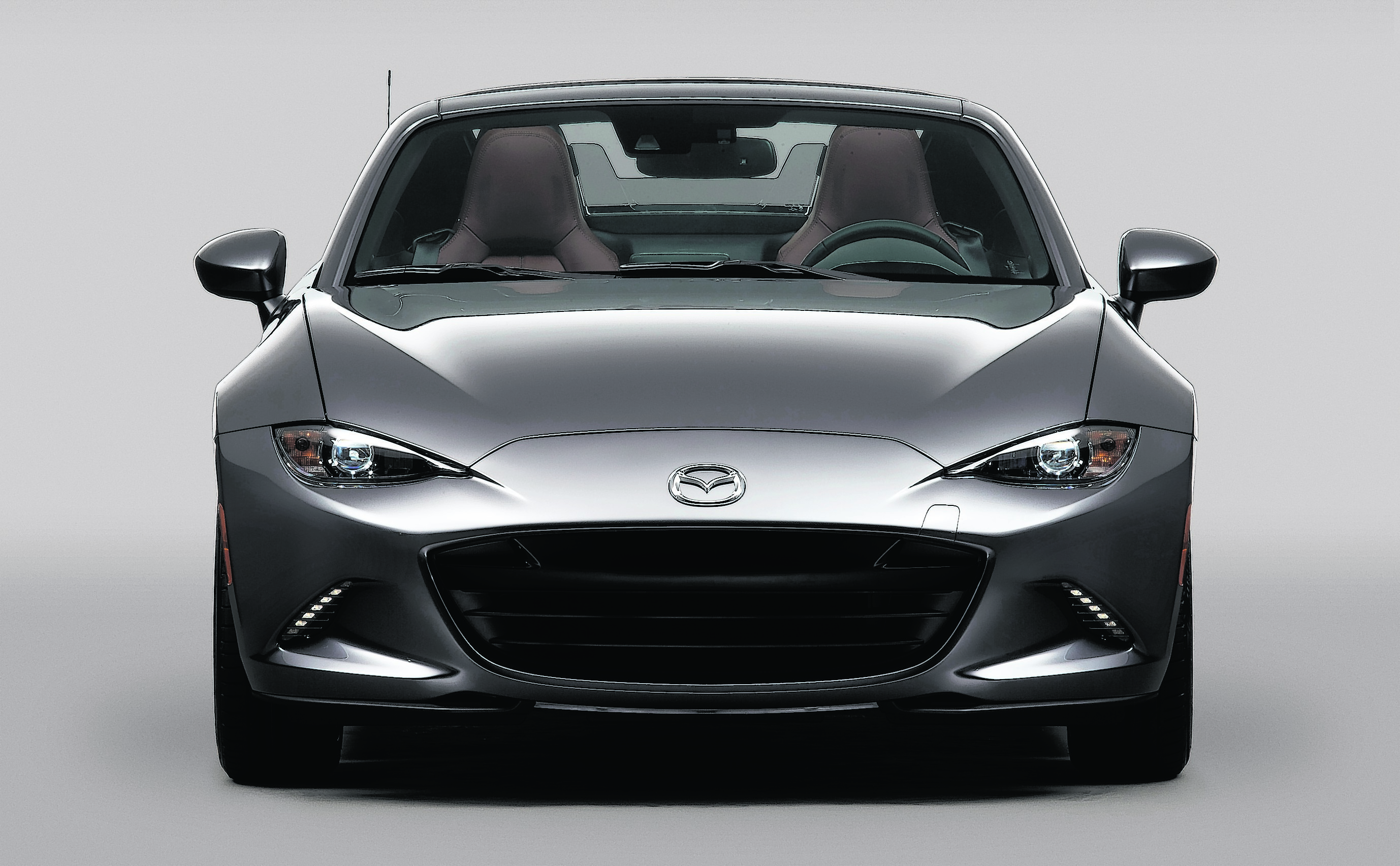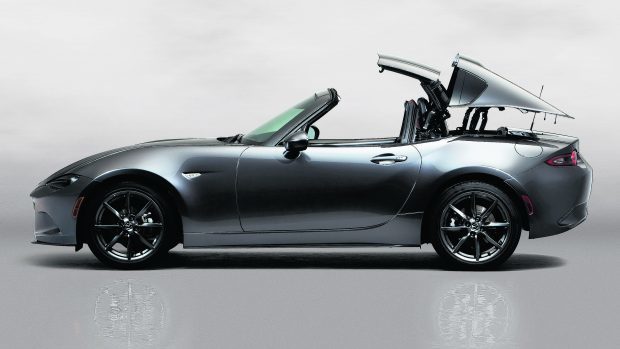Cars with folding hard top roofs can be rather grotty things.
Curiously malformed with distended bottoms and pinched cabins, they usually lose their looks and their practicality once the roof’s up and all you’re left with is toothbrush room in the boot once the hood has done its contortionist’s trick.
Oh yes, these cars offer the customer more. More weight, more complexity and more expense, that is. Therefore, we shuddered when Mazda first announced an RF (Retractable Fastback) version of its fourth generation MX-5.
Seems we needn’t have worried – it’s the exception that proves the rule.
Utilising the basis of an existing MX-5, Mazda managed to build a car that will appeal to a subtly different audience.
For many metropolitan types, parking on-street is a way of life but the hard-topped RF variant offers additional security and is vandal-proofed in a manner that no fabric-roofed car can be.
It’s also a little more refined than the soft-top model. Under the bonnet, this RF model gets the same two power plants available in the standard MX-5. That means it’s offered with either a 1.5-litre 129bhp engine or a 2.0-litre 157bhp unit.
As with the ordinary roadster variant, all models powered by the 2.0-litre engine feature a limited slip differential and 17in wheels. Top versions feature Bilstein dampers and a strut brace to further enhance their dynamic set up.
This fourth generation MX-5 design conforms to five key criteria that Mazda claim define this model line – rear drive with a front-mid engine layout, 50/50 weight distribution and an eagerness to change direction, plus a low kerb weight and an affordable price.
As you would expect, the suspension and electric power steering parameters of the MX-5 have been specifically tuned for the RF version. In addition, a sound-absorbing headliner used in the front and middle roof panels combines with sound insulation around the rear wheel housings to deliver a significantly quieter cabin when the roof is closed. If you want to open the top, this can be done on the move at speeds of up to 6mph.

The MX-5 RF’s electrically retractable hardtop consists of front, middle and rear roof sections – and a rear screen. When the top is lowered, the front and middle portions are stowed together, while the rear glass sits behind the seats, leaving the rear roof section in place to create a unique open-topped look, plus a cabin feeling that combines a sense of open air freedom with the impression of being securely ensconced within the car.
A 5mm increase in roof height aside, the RF retains the same overall length, width and wheelbase as the standard MX-5 convertible, but thanks to gently downward-slopping buttresses that tuck in at the sides to create a teardrop shape, the RF’s elegant fastback silhouette accentuates the MX-5’s dynamic and contemporary sports car proportions in quite a unique way.
Otherwise, things are much as they are in any other MX-5. True to sports car tradition, there’s a stitched leather-trimmed short-throw gearshift lever, with further premium leather on a grippy three-spoke steering wheel that looks and feels great but sadly, still only adjusts for height and not for reach. Through it, you view three satin chrome-ringed gauges, a large rev counter centrally positioned in pride of place.
There’s a £2,000 premium to order this RF variant over the standard fabric-topped roadster model. That means pricing that starts at just over £22,000 for the entry-level SE-L Nav variant fitted with the base 1.5-litre engine. There’s a large £2,600 premium to pay on top of that if you want the better-equipped “Sport Nav” variant with its Bilstein dampers and a strut brace.
In the 2.0-litre RF line-up, prices start at around £23,000 for SE-L Nav trim and again, you’re looking at having to find £2,600 more to upgrade to Sport Nav trim. Once you’ve agreed to do that, you’ll be offered the further £1,400 option of automatic transmission if you want it but, by that time, you’ll be paying over £27,000, which some might feel is a little too much for any MX-5.

In contrast to the metal folding top Roadster Coupe body style in the previous generation MX-5 range, this RF model’s top doesn’t add a significant amount of weight to this iconic little car.
Which means that, in this form, the MX-5 should cost you pretty much the same amount to run as the equivalent fabric-roofed variant. To be specific, the 2.0-litre version most will choose will return a combined fuel consumption return of 40.9mpg and a CO2 reading of 161g/km. If you go for the lesser 1.5-litre model, those figures improve to 47mpg and around 140g/km.
The Mazda MX-5 is a tough car to improve upon but the RF version just about manages it, effectively offering added capability with – cost aside – almost no downside. With many MX-5 models down the years, the ethos was always less is more. The entry-level car was usually the best bet but the RF variant changes this, offering a slightly more mature feel that rewards a bigger engine and more kit.
The hard-top version of the MX-5 should definitely bring the car on to the radar of a new group of buyers. The security and refinement associated with the metal roof will certainly appeal and the automatic gearbox option will also prove a neat fit with buyers wanting a more relaxed everyday drive.
THE FACTS
Model: Mazda MX-5 RF
Price: From around £22,000
Engine: 129bhp 1.5-litre or 157bhp 2.0-litre petrol
Economy: 47mpg (1.5-litre) / 40.9mpg (2.0-litre)
CO2 emissions: 140g/km (1.5-litre) / 161g/km (2.0-litre)
